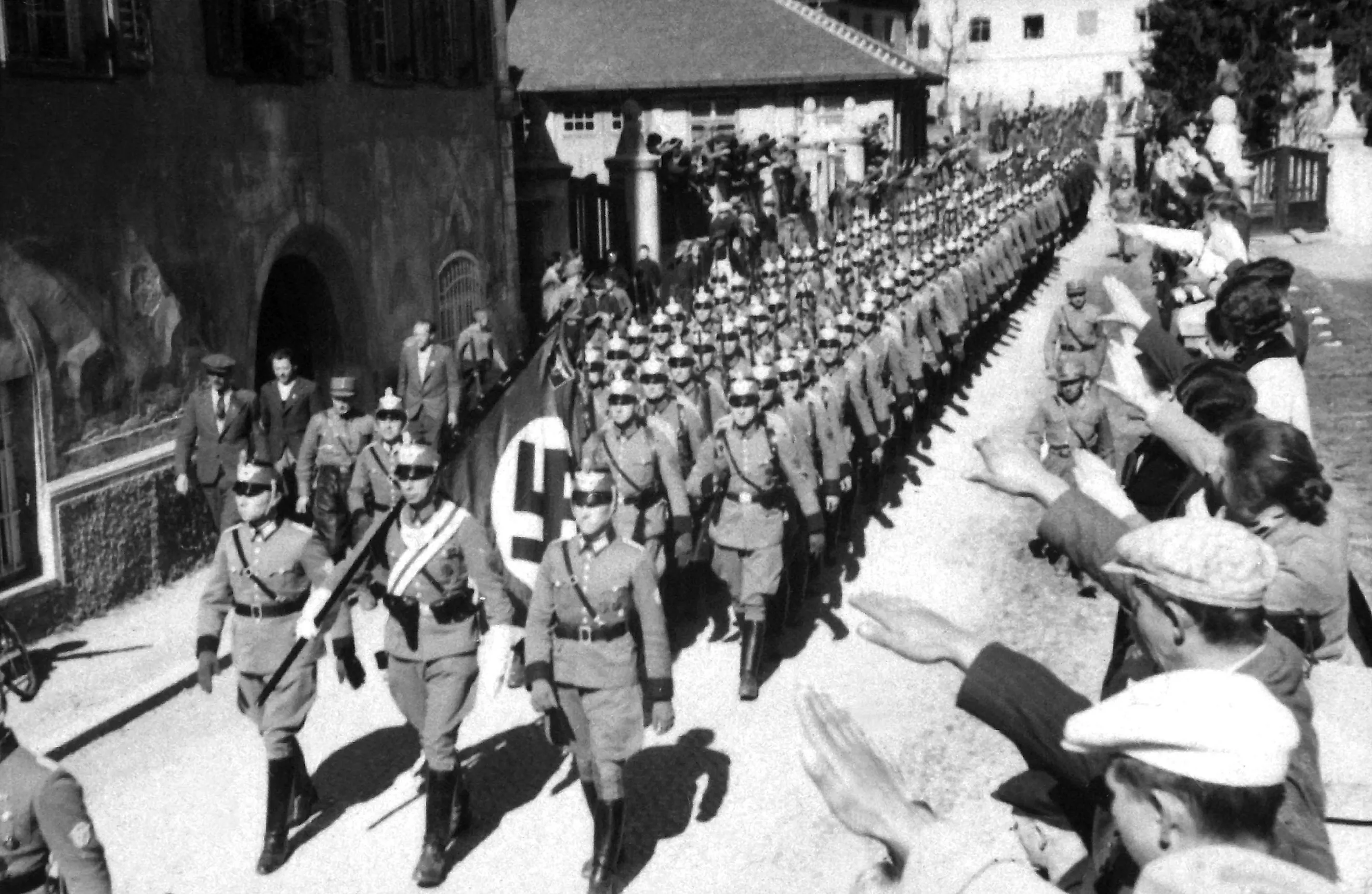
Anschluss: Germany Annexes Austria
Adolf Hitler came to power on January 30, 1933. From the beginning of his reign, he set Germany on a course for conflict, overseeing an increasingly aggressive foreign policy, dramatically increasing the size of the army, and using propaganda to promote the supposed inherent value of violence. One of the most important actions in this process of militarization was the Anschluss, or annexation, of Austria in 1938.
The Nature Of Hitler's Foreign Policy
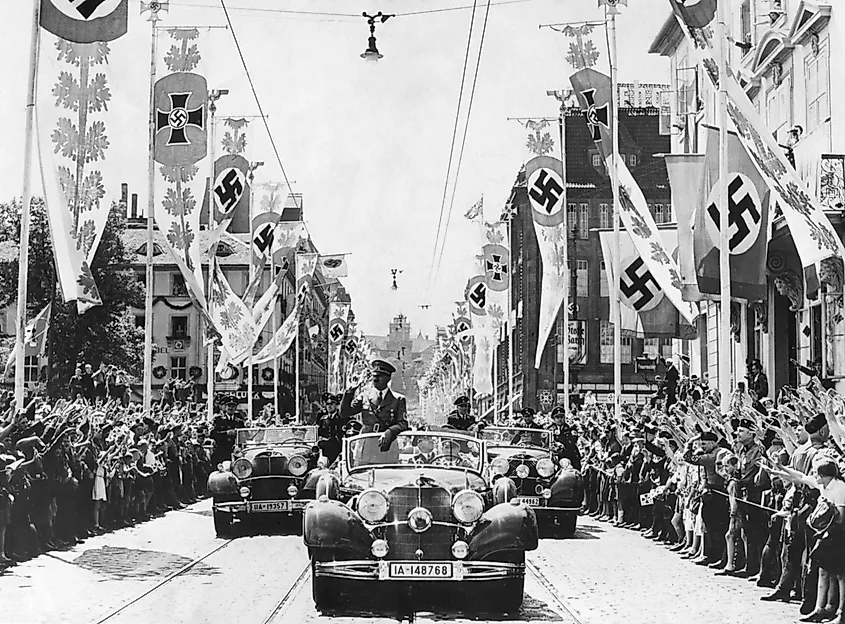
Before explaining Anschluss itself, it is crucial to understand Hitler's broader foreign policy goals. According to Hitler, the nature of the world was one of struggle, specifically struggle between races. A key component of one race winning over the others was having enough living space (Lebensraum). Therefore, Hitler believed that gaining access to living space in the East, specifically in the Soviet Union, was crucial for the "victory" of the so-called "Aryan race." When paired with his view that Slavs were inferior to Aryans, this laid the groundwork for a genocidal conflict. However, before any such war began, Hitler needed to rearm and remilitarize Germany.
Rearmament
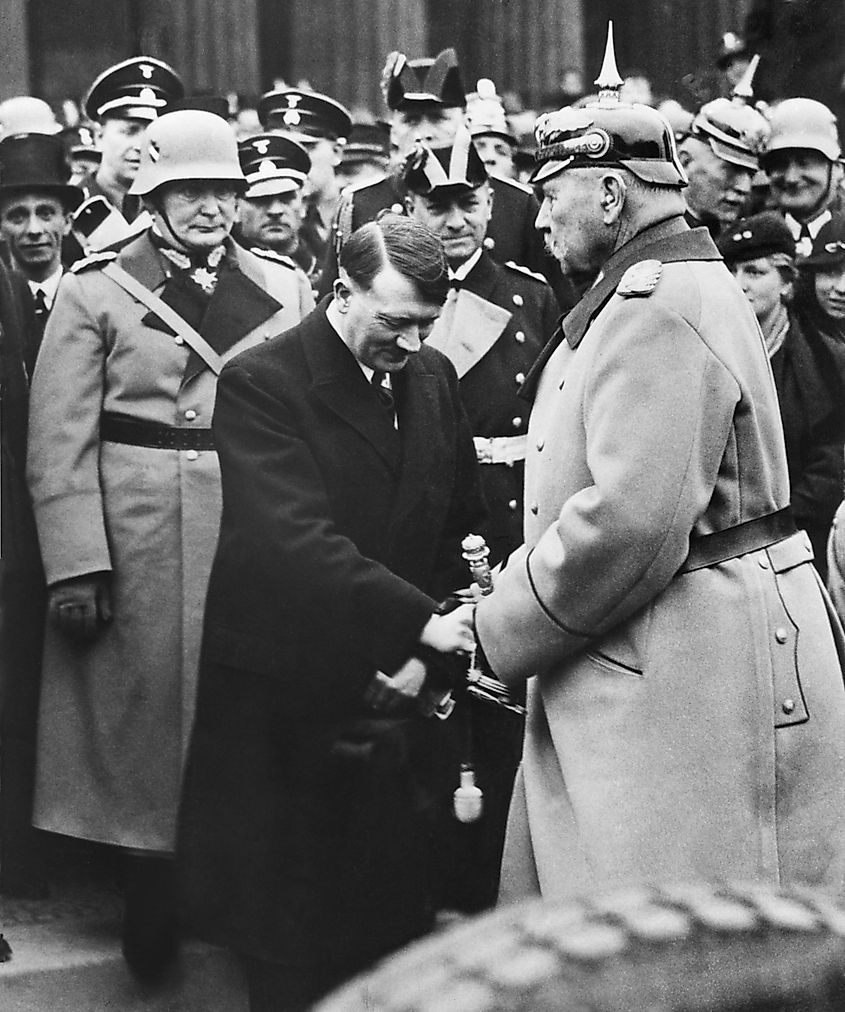
At the beginning of Hitler's chancellorship, he publicly exalted the importance of peace and diplomacy, despite privately speaking of "ruthless Germanization" in the East. His first controversial act, at least internationally, occurred when Germany left the League of Nations in October 1933. However, in January 1934, Hitler ordered the foreign ministry to sign a peace treaty with Poland. The following year, Germany also signed a rapprochement agreement with the United Kingdom. This coming together of former enemies at least somewhat convinced the international community that Germany was interested in peace.
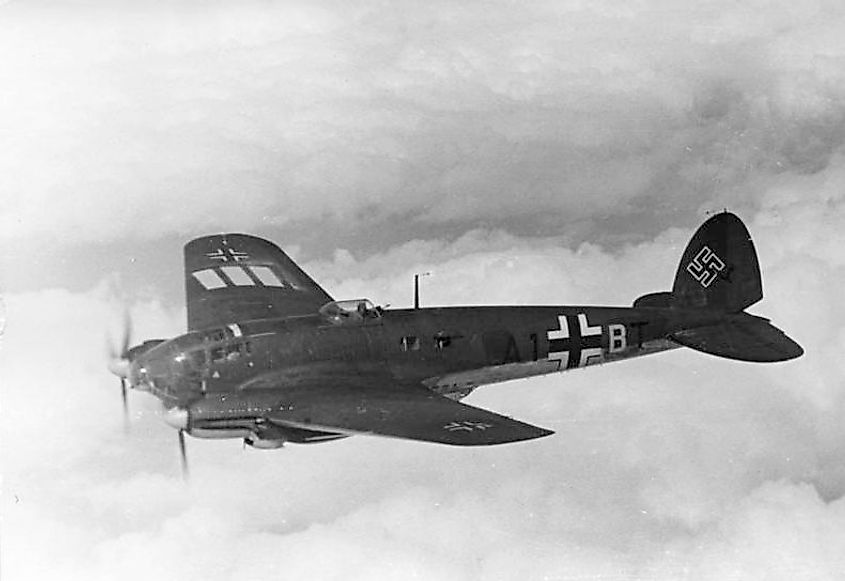
However, on March 16, 1935, Hitler reintroduced conscription in explicit violation of the Treaty of Versailles. Germany's army thus grew from the previously mandated maximum of 100,000 to 550,000. Hitler's first major military endeavor then occurred on March 7, 1936, with the remilitarization of the Rhineland, another action that was banned after World War I. Importantly, this resulted in no meaningful repercussions from the international community. Furthermore, it dramatically bolstered Hitler's reputation domestically and gave him the confidence to pursue an even more aggressive foreign policy.
Anschluss
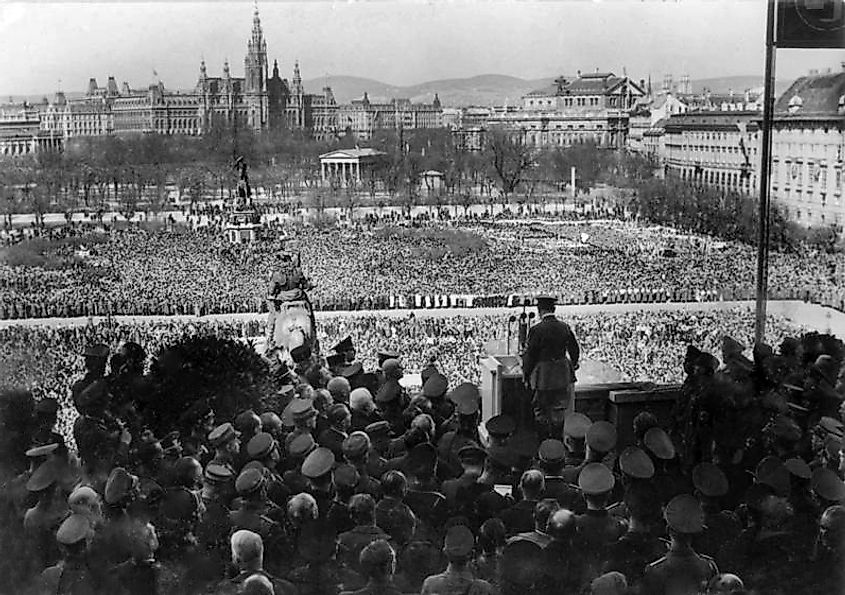
Hitler's next target was Austria. Since the end of the First World War, Austria had done terribly economically, contrasting Germany under Nazi rule. Therefore, in response to domestic pressures and threats of invasion, Austrian chancellor Kurt Schuschnigg announced that a referendum, asking if Austria should become part of Germany, would be held on March 13, 1938. However, the wording of the "Yes" or "No" question angered the Nazis, asking "Are you for a free, German, independent and social, Christian and united Austria, for peace and work, for the equality of all those who affirm themselves for the people and Fatherland?" This, among other reasons, justified Hitler's invasion of Austria the day before the referendum.
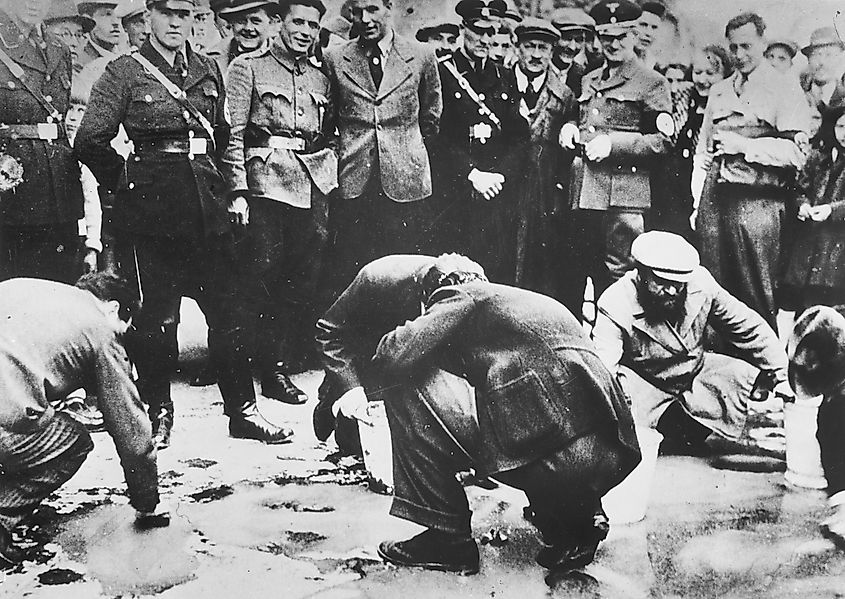
While many responded with euphoria, suicides amongst Austrian Jews increased, and Austrian Communists, Social Democrats, and Jews were arrested. The Nazis then organized their own referendum regarding the unification question, in which 99 percent supposedly voted "Yes." However, there were major fairness issues, with the circle for the "Yes" vote being twice as large as the circle for the "No" vote. Nonetheless, Germany's annexation of Austria was complete. Furthermore, despite a German-Austrian unification being banned by the Treaty of Versailles, the Allies once again did nothing.
The Aftermath
With Austria now under German control, Hitler became even more aggressive. Thus, he began to threaten the Sudetenland, a region of Czechoslovakia that contained mostly German speakers. While prompting some pushback from the Allies in the form of the Munich Agreement, they still gave Germany the territory in September 1938. This was followed by Germany invading the rest of Czechoslovakia on March 15, 1939, directly occupying the Czech part of the country and making Slovakia a satellite state. Finally, after Hitler made threatening overtures to Danzig, a free city under de facto Polish control, Britain and France, both stated that they would attack Germany if it invaded Poland. Therefore, when Germany did exactly this on September 1, 1939, Britain and France declared war. World War Two had now begun.
The annexation of Austria was a crucial event in the lead-up to World War Two. It was indicative of Hitler's newfound confidence since the remilitarization of the Rhineland. Moreover, its success also bolstered his self-assurance, prompting further aggression over the next two years. All this ultimately led to the outbreak of war in Europe.











